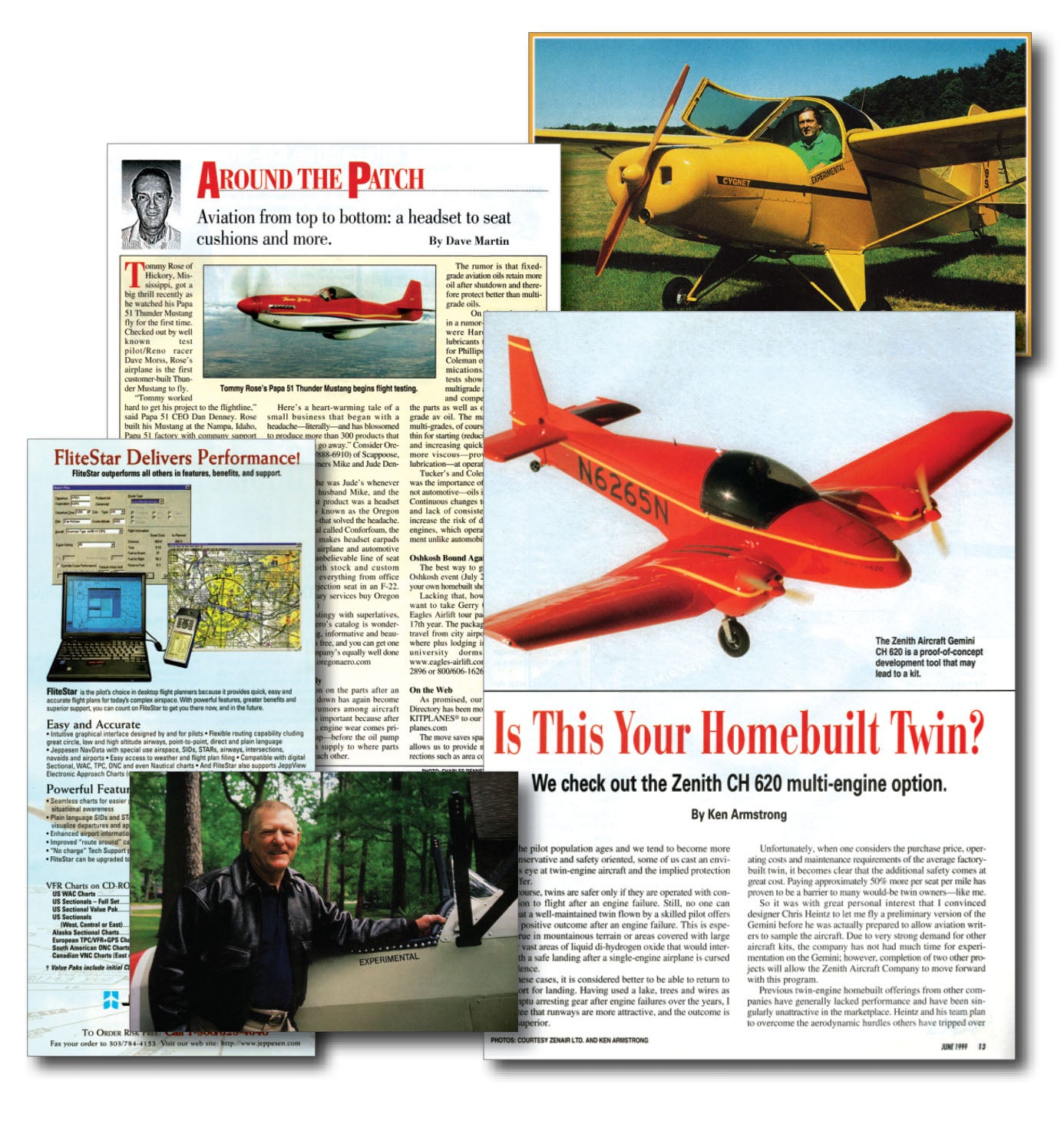 The Viking Cygnet was on the cover of our June 1999 issue. The plansbuilt design debuted at Oshkosh 1977 as Bert Sisler’s second design. The so-called SF-2 featured a 65-hp Volkswagen-based engine and a distinctive forward-swept wing. Howard Levy, who reported on the airplane for this issue, said, “Sisler chose a constant-chord, forward-swept wing arrangement for the Cygnet’s improved visibility and distinctive appearance. But the sweep was also necessary to position the center of lift ahead of the wing root for the required center of gravity.” Builder Alvin Sagler said that his Cygnet took 1200 hours. Sagler said his Cygnet cruised at 90 to 95 mph on 3.5 gallons per hour of fuel after climbing 500 fpm and getting off the ground in 600 feet.
The Viking Cygnet was on the cover of our June 1999 issue. The plansbuilt design debuted at Oshkosh 1977 as Bert Sisler’s second design. The so-called SF-2 featured a 65-hp Volkswagen-based engine and a distinctive forward-swept wing. Howard Levy, who reported on the airplane for this issue, said, “Sisler chose a constant-chord, forward-swept wing arrangement for the Cygnet’s improved visibility and distinctive appearance. But the sweep was also necessary to position the center of lift ahead of the wing root for the required center of gravity.” Builder Alvin Sagler said that his Cygnet took 1200 hours. Sagler said his Cygnet cruised at 90 to 95 mph on 3.5 gallons per hour of fuel after climbing 500 fpm and getting off the ground in 600 feet.
In this issue, Ken Armstrong flew the Zenith CH 620 Gemini prototype twin. With retractable main wheels in a taildragger configuration, the CH 620 looked like a miniature Wing Derringer—another two-seat, side-by-side twin. When Ken flew the airplane, the main wheels were locked down, so the 135-mph cruise would not have been unexpected. Powered by two Jabiru 2200s of 80 hp each, the CH 620 was also planned to be produced in a tricycle-gear version. “Our takeoff from Mexico, Missouri’s main runway was accomplished with a 20-mph right headwind after a run of 500 feet,” said Anderson. “The Gemini accelerated to 90 mph rather quickly and produced a climb rate of 800 fpm with half a fuel load. Although it is normal and safest to hold a twin on the runway until it reaches its single-engine safety speed (VMC), it is interesting to observe how quickly this twin can get airborne as it recalls its sportplane heritage.” Zenith never produced the CH 650 kit.

In today’s world, we take for granted having a raft of computer-based flight-planning choices, but they were still in their infancy in 1999. FliteStar’s ad in this issue showed how its PC-based program could use its “intuitive graphical interface” to help pilots plan flights. FliteStar for North America cost a whopping $249 (about $390 in today’s currency).
Up front, editor Dave Martin reported on Tommy Rose’s Thunder Mustang beginning flight testing. First flown by Dave Morss, Rose’s was the first customer-built Thunder Mustang to fly. Kit maker Papa 51, headed by Dan Denney of Kitfox fame, said, “Tommy worked hard to get his project to the flightline. There were no surprises, and we really didn’t have to do any mods.” Rose’s TM had an improved tailwheel compared to the original design, which resulted in better ground handling. Powered by a 12-cylinder Falconer engine of 640 hp, the Thunder Mustang was said to be the fastest homebuilt of the time.
Finally, LeRoy Cook checked in with famed NASA Flight Controller Gene Kranz, who was about to commit the first flight of his Murphy Renegade. He had trained in a Cessna 170 to get recent taildragger experience and was waiting for production of his book to settle down before making the first flight. That book would be Failure Is Not An Option, an absolute must-read for fans and students of America’s space effort.













